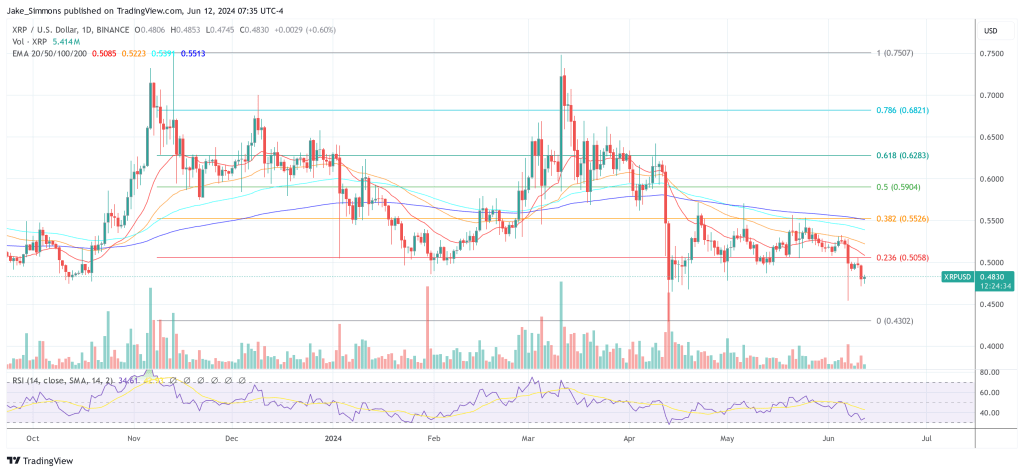RippleX, the development wing of Ripple Labs, has unveiled a major update to the XRPL EVM sidechain, facilitating Ethereum Virtual Machine (EVM) compatibility with the XRP Ledger (XRPL). This major development is set to enhance interoperability and open up new avenues for decentralized finance (DeFi) and real-world asset (RWA) tokenization on XRPL.
Ripple Partners With Axelar For EVM Bridge
The initiative to integrate EVM capabilities into the XRPL was first introduced on the XRPL devnet in October 2022. In a detailed blog post released by Team Ripple, the new sidechain is highlighted as a pivotal innovation.
“We collectively believe that the future of blockchain is multi-chain, and are excited to share an update on one of the top requests from the developer community: bringing Ethereum Virtual Machine (EVM) compatibility to XRP Ledger (XRPL),” the post reads. This compatibility aims to bridge the functional gap between XRPL and Ethereum, enriching the XRPL ecosystem with the vast array of existing Ethereum tools and DApps, thus enhancing its utility and reach.
The XRPL EVM Sidechain, now officially named, operates with a bridge facilitated by Axelar that utilizes wrapped XRP (eXRP) as both the native asset and gas token. This bridge is crucial for ensuring seamless asset transfers between XRPL and the EVM sidechain, maintaining robust interoperability and efficient transaction processing.
The blog post also emphasizes the technical collaboration with Peersyst Technology, stating, “The Ripple engineering team has also been working closely with Peersyst to expand the interoperability of XRPL. Axelar is a battle-tested, production-ready and fully compatible bridge to bring wrapped XRP (eXRP) as a native currency to the XRPL EVM sidechain.” Ferran Prat, CEO of Peersyst, noted, “The Peersyst engineering team is now working to migrate the main bridge to Axelar for the devnet.”
Axelar’s integration provides a decentralized bridge operated by a network of validators, enhancing security and facilitating broader cross-chain interactions. With 75 validators in its network, Axelar enforces rigorous security protocols, including key rotation policies to prevent potential attacks, ensuring the infrastructure’s reliability and trustworthiness.
The new sidechain also aims to simplify the user experience, which has been previously complicated by the use of different bridges for different types of transactions. By using Axelar’s technology for all XRPL to EVM transfers, the process becomes more streamlined and user-friendly.
“The current process of transferring new tokens via XLS-38 is arduous. Using two different bridges—XLS-38 for XRP and Axelar for other tokens and for executing cross-chain smart contracts—complicates the user journey. By consolidating to a single bridge, the process becomes simplified, making it more intuitive and user-friendly,” RippleX writes
Moreover, the company outlines the ongoing significance of the XLS-38 proposal in its blog post, explaining its role in enabling XRPL developers to create custom sidechains. While the amendment remains subject to voting and approval, Ripple’s UNL validator has taken a stance of voting ‘No’ until further validation and community feedback are secured.
Over the next 12-15 months, Ripple engineers will continue to evaluate community input and adoption metrics to refine and possibly expand the EVM sidechain’s functionalities. By engaging with the developer community and gathering feedback, Ripple aims to ensure the XRPL continues evolving to meet user needs effectively.
At press time, XRP traded at $0.483.






